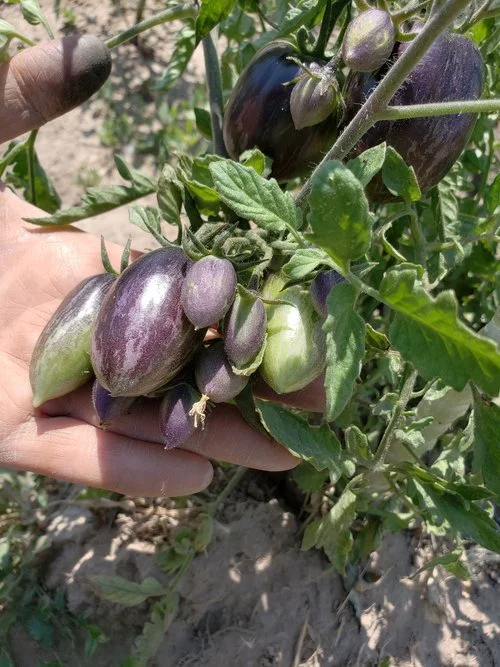Beefsteak Tomato
If summer had a heavyweight champion, Beefsteak would be wearing the belt. Big, bold, and just a little unruly, this tomato is the one you build a sandwich around. With wide shoulders and a juicy interior that practically begs for salt and sunshine, Beefsteak brings that classic, all-American tomato flavor in generous, glorious slices. It's the tomato your grandpa swore by and your kitchen garden dreams about.

Beefsteak
Basic Info
- Type: Indeterminate
- Heritage: Heirloom or Open-Pollinated (varies by seed source)
- Color: Deep red skin with rich red flesh
- Shape/Size: Large, ribbed beefsteak; 12–2+ oz average, sometimes over 1 lbLeaf Type: Regular leaf
Flavor Profile
Classic rich tomato flavor with balanced acidity and robust umami. Thick flesh with a meaty texture, low seed count, and dripping juice that stains cutting boards and memories alike.
Growth Habit
- Plant size: Tall and vigorous; often 6–8 ft
- Support: Heavy-duty cage, trellis, or staking required
- Days to Maturity: 80–90+ days from transplant
Production Notes
- Yield: Medium yield with large individual fruit
- Fruit Set: Reliable in well-fed soil; avoid high-nitrogen inputs once flowering begins
- Disease Tolerance: Moderate; susceptible to blossom end rot and cracking in uneven watering conditions
- Weather Notes: Best grown with steady moisture and airflow; benefits from afternoon shade in high heat zones
Culinary Uses
- Sandwiches — the gold standard for BLTs and tomato-mayo stacks
- Burgers — one slice covers the bun
- Caprese and platters — perfect sliced thick with basil and mozzarella
- Roasted or grilled — holds structure beautifully
Growing Notes
- Soil: Prefers rich, well-aerated loam with compost or aged manure
- Fertilization: Low nitrogen after vegetative stage; potassium boost during fruiting
- Companion Plants: Grows well with basil, carrots, garlic; avoid fennel
- KNF Applications: FPJ + LAB during flowering; WCa for fruit firmness; WSK during peak growth
- Pest Pressure: Tomato hornworm and aphid target; neem or BT preferred
Transplanting Tomatoes and Early Season Care
Getting tomatoes in the ground is more than just digging a hole. In this post, I share how I prep beds, space plants, and give them the strong start they need—whether I’m planting after pigs, using cattle panel trellises, or mulching deep with wood chips and compost. We’ll cover transplant timing, root stability, and how to guide growth early for a harvest that just keeps giving.
Happy Gardening!
Let’s Fall for the Garden again!
Summer might be winding down, but the garden season isn’t over yet. This post is all about keeping the momentum going into fall—with tips for planting cool-weather crops, protecting tender starts, and prepping for those early frosts. Whether you’re sowing another round of greens or putting in a fall cover crop, there’s still plenty to grow (and love) in the garden.
Happy Gardening!


